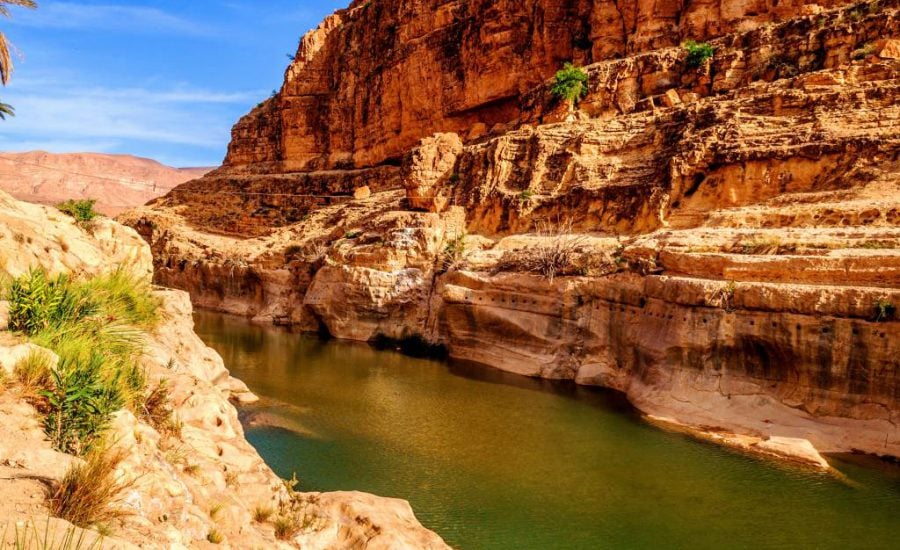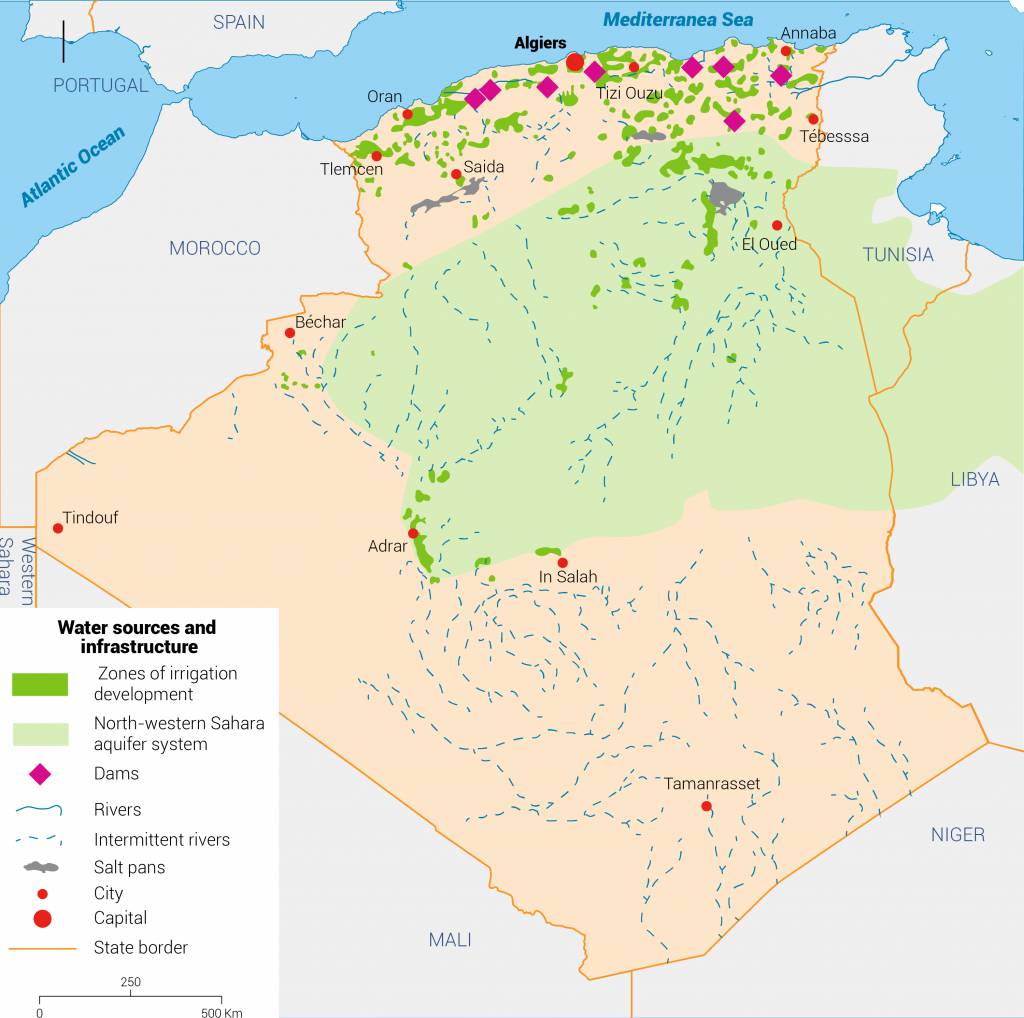
Disputed surface and groundwater resources
The two large overlapping aquifers in the south, the Complex Terminal and the Continental Interlayer, cover an area of 600,000 km2 and provide annually up to 40,000 BCM of water. This important groundwater source is part of one of the largest in the world. It is shared with Libya (20%) and Tunisia (10%). It has an operating capacity of 5 BCM/yr, but only 1.7 BCM/yr are exploited.[2] Algeria does not share any of its surface waters, giving it sovereignty over the management, exploitation and distribution of this resource.

Treaties and agreements
The latest agreement related to the water sector was signed on 26 October 2017 with the European Union. Called the Partnership for Research and Innovation in the Mediterranean Area (PRIMA), the initiative aims to use new research and innovation approaches to improve water availability and sustainable agriculture production around the Mediterranean.[3] [4]
Under the auspices of the European Commission, the Belgian organizations La Société Wallonne Des Eaux and La Société Publique de Gestion de l’Eau partnered with the Algerian Agency for Integrated Water Resources Management to provide Algeria with tools to clarify the status of water resources, improve capacity, develop a national strategy to ensure water supply while preserving the sustainability of the resource.[5]
Other collaborations carried out within the framework of water distribution network improvements include a $1 billion agreement with France, Spain and Germany in pilot cities with high population density, growing demand and an old and leaky network.
[1] British Geological Survey, 2018. Africa Groundwater Atlas: Hydrogeology of Algeria.
[2] Zella L, 2007. L’eau: pénurie ou incurie. Office des Publications Universitaires, Algeria.
[3] Delegation of the European Union to Algeria, 2017. ‘L’Algérie scelle sa participation à l’initiative PRIMA’.
[4] Algerian Embassy in Brussels, 2017. L’Algérie signe l’accord international sur PRIMA.
[5] La Société Wallonne Des Eaux, 2017. L’Algérienne des Eaux s’appuie sur la SWDE créer son centre de formation.
